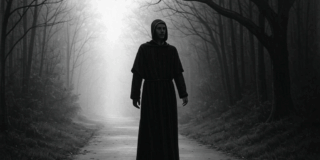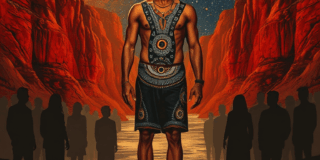
Introduction
The term “Nazi” evokes one of the darkest chapters in human history: the regime led by Adolf Hitler in Germany from 1933 to 1945, responsible for the Holocaust, World War II, and the systematic extermination of millions based on ideologies of racial supremacy, anti-Semitism, and authoritarianism. Today, “Nazis” often refers to neo-Nazis, individuals or groups who adhere to similar ideologies, promoting white supremacy, xenophobia, and fascist principles. These modern iterations include organisations like the National Socialist Network (NSN) in Australia, which recently made headlines for violent actions that underscore their fundamental incompatibility with contemporary society, and the Proud Boys in the United States, known for their role in events like the January 6, 2021, Capitol riot.
Mainstream society, in the context of liberal democracies like those in the United States, Europe, Australia and beyond, is built on principles of equality, diversity, human rights, and the rule of law. It encompasses a broad spectrum of cultural, ethnic, and ideological backgrounds coexisting under frameworks that protect individual freedoms while discouraging hate and violence. Integration into this society requires adherence to these norms: respecting others’ rights, engaging in peaceful discourse, and contributing positively to communal life.
This essay post that Nazis are incapable of integrating with mainstream society due to inherent ideological, behavioural, social, legal and psychological barriers. Their worldview is antithetical to the foundational values of modern civilisation, leading to inevitable conflict, rejection and isolation. Drawing from historical precedents, psychological analyses, sociological studies and recent events, such as the NSN’s attack on Camp Sovereignty in Melbourne on August 31, 2025, I will explore why neo-Nazis remain on the fringes, unable to assimilate without abandoning their core beliefs. To deepen this analysis, I will incorporate a comparative examination of the NSN and the Proud Boys, two prominent far-right groups, focusing on their ideologies and tactics. This comparison highlights how such movements adapt to local contexts while perpetuating exclusion and dominance, further illustrating their broader incompatibility with society.
The NSN attack exemplifies this incompatibility: a group of neo-Nazis, after participating in an anti-immigration rally, stormed an Indigenous protest site known as Camp Sovereignty, injuring multiple people, including a woman in her 30s who required hospitalisation for upper body injuries. Victoria Police (Vicpol) escorted the group earlier but made no arrests immediately following the violence, highlighting tensions between law enforcement and far-right extremism. This incident not only injured individuals but also targeted a symbol of Indigenous sovereignty and resistance, revealing the Nazis’ propensity for aggression against marginalised groups.
To fully understand this incapacity for integration, I must delve into the roots of Nazi ideology and its evolution. The original Nazi Party, or National Socialist German Workers’ Party (NSDAP), rose in the Weimar Republic amid economic turmoil and national humiliation post-World War I. Hitler’s “Mein Kampf” outlined a vision of Aryan supremacy, Lebensraum (living space), and the elimination of “inferior” races. This ideology justified atrocities that claimed over 70 million lives globally.
Post-1945, Nazi ideas persisted underground, resurfacing in neo-Nazi movements like the American Nazi Party (founded by George Lincoln Rockwell in 1959) or skinhead groups in the UK during the 1980s. In Australia, groups like the NSN, led by figures such as Thomas Sewell, blend traditional Nazi symbolism with contemporary anti-immigration rhetoric. Their black uniforms, Sieg Heil salutes, and online propaganda echo historical fascism while adapting to modern grievances like economic inequality and cultural change. Similarly, the Proud Boys, established in 2016 by Gavin McInnes, position themselves as “Western chauvinists” who defend traditional values through street-level violence and political disruption.
Why can’t these groups integrate? At its core, Nazi ideology demands dominance, not coexistence. It views diversity as a threat, equality as weakness, and democracy as a Jewish conspiracy. In a society that celebrates multiculturalism, evidenced by policies like Australia’s Indigenous reconciliation efforts or the US Civil Rights Act, Nazis find themselves ideologically orphaned. Their integration would require renouncing these beliefs, which they see as betrayal.
This post will expand on five key reasons: ideological incompatibility, propensity for violence, social and cultural rejection, legal and institutional barriers, and psychological factors. Each section will provide historical context, empirical evidence, and analysis, incorporating the comparative lens of the NSN and Proud Boys to illustrate these points in contemporary terms.
Ideological Incompatibility
Nazi ideology is fundamentally at odds with the principles of mainstream society, making integration impossible without a complete ideological overhaul. Central to Nazism is the concept of racial hierarchy, where Aryans (or in modern terms, white Europeans) are deemed superior, and others – Jews, Roma, Blacks, Indigenous peoples and immigrants – are subhuman or threats to purity.
This contrasts sharply with modern societal values enshrined in international documents like the Universal Declaration of Human Rights (1948), which asserts that “all human beings are born free and equal in dignity and rights.” In Australia, the Racial Discrimination Act 1975 prohibits actions based on race, colour, or national origin, directly countering Nazi supremacism. In the US, similar protections under the Fourteenth Amendment underscore this commitment to equality.
Consider the NSN’s recent actions.Their attack on Camp Sovereignty, a site established by Indigenous activists to protest colonial legacies and demand land rights, was not random violence, but a targeted assault on symbols of non-white resistance. Camp Sovereignty, located near Melbourne’s Parliament House, represents ongoing efforts for First Nations reconciliation, including treaty negotiations and cultural preservation. By storming the site with sticks and poles, attempting to destroy installations, and chanting racist slogans, the NSN demonstrated their rejection of Indigenous rights, a core aspect of Australian mainstream discourse.
Historically, Nazis have always positioned themselves against pluralism. The Nuremberg Laws of 1935 stripped Jews of citizenship, foreshadowing the Holocaust. Neo-Nazis today echo this through Holocaust denial, anti-Semitic conspiracy theories (e.g., “Zionist Occupied Government”), and opposition to multiculturalism. In the US, groups like the Aryan Nations advocate for a white ethnostate, incompatible with the melting pot ideal.
To compare with the Proud Boys, both the NSN and Proud Boys operate on the fringes of society, drawing from fascist traditions and employing violence to advance their agendas, but they differ in their framing of supremacy, recruitment strategies, and engagement with mainstream politics. The NSN is unapologetically neo-Nazi, drawing directly from Adolf Hitler’s National Socialism. Its members advocate for racial purity, viewing non-white immigrants, Indigenous peoples and Jews as threats to a white ethnostate. This is evident in their use of swastika-like symbols and rhetoric echoing “Mein Kampf”, such as calls for “Australia for the white man.” The group’s leader, Thomas Sewell, has publicly expressed admiration for Nazi principles, framing multiculturalism as a conspiracy to dilute white heritage.
In ideological terms, the NSN promotes accelerationism, the belief that societal collapse through provoked chaos will enable a fascist rebirth. This aligns with broader neo-Nazi thought, as seen in influences from groups like the Atomwaffen Division in the US. Their anti-Semitism is overt; Sewell has made statements implying readiness for terrorism if “Nazi families” are targeted, blending family values with genocidal undertones. Economically, they critique capitalism as a “Jewish invention,” advocating a state-controlled economy for racial goals, though in practice, this manifests as vague anti-globalisation rants.
The Proud Boys, conversely, adopt a more veiled approach, describing themselves as “Western chauvinists” who celebrate the achievements of Western civilisation without explicitly endorsing racial supremacy, at least publicly. Founded amid the rise of Donald Trump, their ideology emphasises hyper-masculinity, anti-feminism and opposition to “political correctness.” They reject white nationalism labels, pointing to diverse membership (e.g., former leader Enrique Tarrio is Afro-Cuban), but internal documents and actions reveal ties to white supremacism. The FBI has classified them as an “extremist group with ties to white nationalism,” noting their Islamophobia, anti-LGBTQ+ stance, and anti-immigrant views.
Proud Boys ideology revolves around “uhuru” (Swahili for freedom, ironically appropriated) and degrees of membership, where initiates must renounce masturbation and engage in violence to advance. This cult of masculinity draws from McInnes’s Vice Media background, using irony to weaponise hate, e.g., chanting “Proud of Your Boy” from Disney’s Aladdin while brawling. They frame themselves as defenders against “antifa” and leftists, aligning with conspiracy theories like the “Great Replacement.” Unlike the NSN’s explicit racism, Proud Boys employ “cryptofascism,” hiding fascist elements behind humour to recruit and evade scrutiny.
Comparing the two, both ideologies stem from fascist roots: NSN from historical Nazism, Proud Boys from neo-fascism influenced by figures like Oswald Mosley. Similarities include anti-multiculturalism, viewing diversity as weakness and authoritarianism, both reject democracy, seeing it as manipulated by elites (Jews for NSN, “globalists” for Proud Boys). However, NSN’s overt racial hierarchy contrasts with Proud Boys’ “cultural” supremacy, allowing the latter broader appeal among conservatives. NSN targets Indigenous and migrant groups directly, as in the Camp Sovereignty assault, while Proud Boys focus on ideological enemies like progressives.
These differences reflect national contexts: Australia’s history of Indigenous dispossession amplifies NSN’s anti-reconciliation stance, whereas US polarisation enables Proud Boys to infiltrate Republican circles. Psychologically, both attract those with authoritarian personalities, high in rigidity and low empathy, per Adorno’s F-scale. Yet, NSN’s purity tests limit growth, while Proud Boys’ irony facilitates mainstream crossover, as seen in their role at Trump rallies.
Sociologically, integration requires shared values and norms, as theorised by Émile Durkheim in his concept of mechanical and organic solidarity. Mainstream society operates on organic solidarity, interdependence among diverse groups, while Nazis seek mechanical solidarity based on homogeneity. This mismatch leads to self-segregation; neo-Nazis form insular communities, like online forums on Telegram or physical compounds, avoiding mainstream interaction.
Furthermore, Nazi economics, a mix of anti-capitalist rhetoric and corporatist control, clashes with free-market democracies. Hitler criticised both communism and capitalism as Jewish inventions, proposing a state-directed economy for racial goals. Modern neo-Nazis often rail against globalisation, seeing it as diluting white culture, yet they benefit from it (e.g., using imported technology for propaganda). This hypocrisy doesn’t aid integration; it fuels resentment.
In education, mainstream curricula teach tolerance and history’s lessons, including Nazi atrocities. Neo-Nazis, however, homeschool or indoctrinate children with revisionist history, perpetuating cycles of extremism. A 2023 study by the Anti-Defamation League found that exposure to Nazi ideology in youth correlates with lifelong marginalisation.
Politically, Nazis reject democracy. Hitler seized power legally, but dismantled it. Neo-Nazis today infiltrate politics (e.g., via far-right parties like Germany’s AfD), but when exposed, they face backlash. In Australia, the NSN’s anti-immigration rally preceding the Camp Sovereignty attack was framed as “free speech,” but their violence revealed authoritarian impulses.
This ideological chasm is unbridgeable. To integrate, Nazis would need to accept equality, but their identity is built on superiority. As philosopher Hannah Arendt noted in “The Origins of Totalitarianism”, such ideologies demand total loyalty, leaving no room for compromise. The comparison between NSN and Proud Boys underscores this: while the Proud Boys attempt a more palatable facade, their core exclusionary principles still alienate them from egalitarian norms.
Propensity for Violence
A defining trait of Nazis is their embrace of violence as a political tool, rendering them incapable of peaceful integration into society. From the Sturmabteilung (SA) brownshirts’ street brawls in 1920s Germany to modern neo-Nazi attacks, violence is not aberrant but integral to their methodology.
The NSN’s assault on Camp Sovereignty illustrates this: After an anti-immigration march in Melbourne, men in black clothing rushed the Indigenous camp, wielding weapons and causing injuries. Footage shows them attacking bystanders and destroying property, with shouts of “Australia for the white man.” A woman in her 30s suffered upper body injuries requiring hospitalisation, and others reported bruises and trauma. This wasn’t spontaneous; NSN leader Thomas Sewell has a history of violent convictions, including assaulting security guards.
Historically, Nazi violence served to intimidate opponents and consolidate power. The Night of the Long Knives (1934) purged internal rivals, while Kristallnacht (1938) targeted Jewish businesses. Post-war, neo-Nazis continued this: the 1979 Greensboro Massacre in the US, where Klan and Nazi members killed five anti-racist protesters; or the 2017 Charlottesville Unite the Right rally, where a neo-Nazi drove into counter-protesters, killing Heather Heyer.
Why this propensity? Nazi ideology glorifies struggle (Kampf) as Darwinian necessity. Hitler’s writings frame life as a racial war, where the strong dominate. Modern neo-Nazis draw from accelerationism, the idea that societal collapse through violence will enable a white revolution. Books like “The Turner Diaries” inspire acts like the Oklahoma City bombing (1995).
In mainstream society, violence is taboo except in self-defence or lawful authority. Laws like Australia’s Crimes Act 1958 criminalise assault, and international norms under the Geneva Conventions reject targeting civilians. Nazis, however, view violence against “enemies” as heroic.
This leads to cycles of escalation. When neo-Nazis march, counter-protests form, leading to clashes. Police often protect their right to assemble (as Vicpol did by escorting NSN), but post-violence, no arrests in the Camp Sovereignty case sparked outrage, suggesting perceived leniency. Critics argue this enables extremism, but even with protection, Nazis’ actions alienate them.
Psychologically, violence appeals to those with authoritarian personalities, per Theodor Adorno’s F-scale. High scorers exhibit rigidity and aggression, traits common in neo-Nazis. Rehabilitation is rare; deradicalisation programs like Exit USA succeed only when individuals reject violence entirely.
Globally, examples abound: In Germany, the NSU (National Socialist Underground) murdered immigrants from 2000-2007. In New Zealand, the Christchurch mosque shooter (2019) cited Nazi influences. These acts provoke societal backlash, reinforcing isolation.
Tactics are where the NSN and Proud Boys show striking parallels, employing a mix of online radicalisation, public demonstrations, and violence to amplify their presence. Both groups use digital platforms for recruitment and coordination, but their execution varies with ideology and environment.
The NSN’s tactics are brazen and militaristic. They organise marches in black uniforms, performing Sieg Heil salutes and chanting racist slogans, as during the anti-immigration rally preceding the Camp Sovereignty attack. Violence is premeditated; members wore mouthguards and wielded sticks, injuring protesters including a woman in her 30s. This fits their accelerationist strategy, provoking backlash to radicalise sympathisers. Online, they use Telegram for propaganda, sharing Holocaust denial and recruitment videos. Sewell’s criminal history, including assaults, underscores their embrace of physical intimidation. They infiltrate broader movements, like the “March for Australia,” to hijack narratives, claiming credit to smear moderates.
Proud Boys tactics emphasise street brawls and “stand back and stand by” readiness, as Trump once urged. They stage “fight clubs” at rallies, clashing with counter-protesters like Antifa in Portland or Charlottesville. Their structure, chapters with initiation rituals, fosters loyalty, with higher degrees requiring violence. Armed extremism is key; many carry weapons, using gun rights rhetoric to oppose reforms. Online, they weaponise irony on platforms like Gab or Parler, spreading memes that normalise hate. Post-January 6, where over 40 members faced charges, they’ve rebuilt underground, protecting Trump events and exploiting polarisation. This insularity prevents learning social cues for integration. When venturing out, like NSN’s rally, they mask faces, indicating awareness of rejection.
Comparatively, both rely on “performative violence”, staged confrontations for media attention. NSN’s attacks on symbols like Indigenous camps mirror Proud Boys’ targeting of leftist events. Recruitment tactics overlap: NSN exploits “freedom movements” from COVID protests, Proud Boys the 2016 election fervour. Differences emerge in sophistication; Proud Boys use “plausible deniability” through humour, evading bans longer than NSN, which faces direct counter-terrorism scrutiny from ASIO. NSN’s overt Nazism limits alliances, while Proud Boys collaborate with Oath Keepers or Patriot Social and Cultural Rejection. Yet ideologically, they are both anti-elitist, viewing governments as corrupted by minorities or leftists. Violence is glorified as a masculine duty, with online-offline synergy for growth.
Mainstream society actively rejects Nazis due to their hateful rhetoric and actions, creating a self-reinforcing barrier to integration. This rejection manifests in cultural norms, media portrayal, employment discrimination and community ostracism. Nazis are cultural pariahs. Popular media from films like “Schindler’s List” to games like “Wolfenstein”, depicts them as villains. This shapes public opinion; a 2024 Pew Research poll found 92% of Americans view Nazis unfavourably. In Australia, post-Camp Sovereignty attack, politicians across parties condemned the NSN as “gutless” and “cowardly.” Indigenous leaders called it an attack on Black and Brown people, migrants, and Palestinians, linking it to broader solidarity movements.
Why this rejection? Nazis’ symbols – swastikas, 88 (code for Heil Hitler) – evoke trauma. For Holocaust survivors’ descendants or marginalised groups, they’re triggers. Society’s trauma-informed approach prioritises safety over inclusion of hatemongers.
Sociologically, violence isolates groups. Robert Putnam’s “Bowling Alone” discusses social capital; Nazis destroy it by fostering fear. Communities respond with boycotts, deplatforming, and vigilance, as seen in anti-fascist movements. Nazis face exclusion. Dating apps ban swastika profiles; employers fire those exposed in rallies (e.g., after Charlottesville, several lost jobs). Family ties strain; many neo-Nazis report estrangement. Schools teach anti-racism, whilst the denialism of Nazis’ encourages clashes. Ultimately, universities expel students who are members of a hate group.
Economically, the rejection hits hard. Boycotts target Nazi-linked businesses; crowdfunding platforms deplatform them. The NSN relies on anonymous donations, limiting its growth. Cultural rejection but is consistent globally. In Europe, Holocaust denial is illegal; in South America, Nazi exiles like Adolf Eichmann were hunted. Even in tolerant societies, limits exist – freer speech doesn’t mean social acceptance.
Arendt’s “banality of evil” suggests ordinary people enable extremism, but post-WWII, society evolved safeguards: hate speech laws, diversity training. Nazis, refusing adaptation, remain rejected. Rejection isn’t prejudice, but self-preservation. Society integrates those who contribute; Nazis subtract through division.
Differences highlight adaptations: NSN’s Australian focus on Indigenous issues contrasts Proud Boys’ US-centric anti-leftism. NSN is smaller, more insular (hundreds vs. thousands for Proud Boys), due to stricter hate laws. Proud Boys’ façade of diversity allows broader recruitment, while NSN demands racial purity.
NSN’s Camp Sovereignty raid parallels Proud Boys’ Capitol involvement using premeditated chaos to disrupt. But whilst the NSN faces less mainstream flirtation than Proud Boys, it was the latter who influenced GOP rhetoric. Both groups appeal to alienated men, exacerbating polarisation and eroding trust in institution, but it is NSN’s extremism that leads to higher rates of failure in deradicalisation. It’s actions fuel an anti-racism backlash in Australia, while Proud Boys normalise extremism in the US. Their incapacity for integration mired is in ideological rigidity – supremacy demands dominance, not coexistence.
Legal and Institutional Barriers
Legal systems in democracies erect barriers to Nazi integration by criminalising their core activities: hate speech, incitement and organisation. In Australia, the NSN operates on the fringe; while not banned, members face charges for violence. Post-Camp Sovereignty, counter-terrorism police investigated, signalling an institutional response. Laws like Section 18C of the Racial Discrimination Act prohibit racial vilification but are not always enforced.
Historically, the Nuremberg Trials (1945-1946) set precedents, convicting Nazis for crimes against humanity. Today, international law under the ICC targets similar ideologies. In the US, the First Amendment protects speech, but not threats or incitement (Brandenburg v. Ohio, 1969). Groups like the SPLC label neo-Nazis as hate organisations, aiding lawsuits.
Intelligence agencies monitor extremists. ASIO in Australia classifies far-right groups as threats. The FBI does similarly in the US. Legal consequences deter integration and prison entrenches radicalisation. The UN promotes human rights, clashing with Nazi genocide advocacy. And whilst ultimately, laws reflect societal values, Nazis, opposing them face perpetual conflict. Sewell’s prior convictions didn’t rehabilitate; they emboldened him.
At a global level, the NSN links to US neo-Nazis groups such as NSO, Proud Boys to international far-right like Generation Identity. With rising migration, both may grow, but backlash could marginalise them further.
Psychological Factors
Nazis exhibit traits that hinder integration: narcissism, paranoia, low empathy and cognitive dissonance. Research by Bob Altemeyer on right-wing authoritarianism shows high RWAs submit to authority, aggress against outgroups, and hold conventional views. Paradoxically, Nazis rebel against democratic authority while craving fascist ones.
Joining Nazi groups often stems from personal grievances: unemployment, alienation. A 2022 study in “Journal of Personality and Social Psychology” found neo-Nazis score high on dark triad traits (Machiavellianism, narcissism, psychopathy). The attack on Camp Sovereignty yesterday may reflect displaced anger, whilst the anti-immigration rhetoric of the rallies masks insecurity. Cognitive biases like confirmation bias lock them in and exposure to contrary evidence triggers backlash.
Deradicalisation is possible but rare, requiring empathy-building, which Nazis resist. Group dynamics foster deindividuation, enabling violence without guilt. In mainstream society, mental health support emphasises inclusivity, but Nazis view therapy as weak. Thus, psychological wiring perpetuates isolation. Authoritarian traits drive group members; sociology shows group dynamics deindividuate, enabling violence. Integration with the broader society requires renunciation of these attitudes, which is rare without intervention.
Conclusion
Nazis’ ideological rigidity, violence, rejection, legal barriers and psychology render integration impossible. The Camp Sovereignty attack epitomises this – a violent clash with diversity’s defenders. NSN and Proud Boys, through compared ideologies and tactics, exemplify far-right threats. NSN’s overt Nazism versus Proud Boys’ cryptic fascism shows adaptation, but shared violence ensures isolation. Society must confront them through vigilance and inclusion. Society must remain vigilant, promoting inclusivity while isolating extremism. Only through renunciation can former Nazis integrate, but as Nazis, they remain outsiders.



